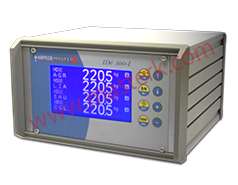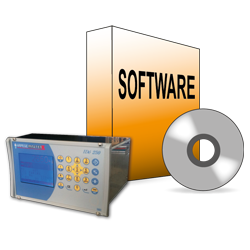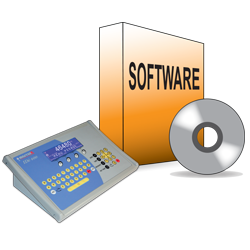NAWI dynamic weighing indicators
Operating principles and origins
Operating principles
A NAWI (Non automatic weighing instruments) dynamic weighing indicator for weighing scales is an electronic device used to display and process data from load cells, generally used in industrial and/or commercial applications. This type of measuring instrument is classified as NAWI because it operates automatically, complies with current standards and offers sophisticated weighing data management functions.
The load is generally weighed without stabilising the weight, as the material is in motion during the measurement (e.g. weighing on a conveyor belt), or by successive weighings with automatic accumulation (e.g. discontinuous totaliser).
The operating principle of these indicators is based on the collection and processing of electrical signals from load cells. The load cells detect the force applied to the scale, and this information is converted into an electrical signal proportional to the load. The NAWI weighing indicator then takes this signal, performs the necessary calculations, and displays the resulting weight on a screen.
Origins of NAWI weighing
The move towards NAWI weighing indicators was driven by the growing demand for advanced weighing data management in various sectors. The use of advanced functions in these weighing systems has become crucial to meet the specific needs of industries with demanding weighing requirements.
The origins of this type of NAWI weighing can be traced back to technological advances in electronics and data processing. Over the years, the needs of businesses have evolved, requiring weighing indicators capable of providing more than just weight measurements. As a result, designers have developed indicators with advanced features to meet the growing demands of users.
Advanced features
NAWI weighing indicators are distinguished by their advanced features, which go beyond the capabilities of conventional weighing indicators. These include :
Extended connectivity
NAWI indicators often offer extensive connectivity, enabling integration with computer systems, networks or management software. This facilitates the collection, monitoring and analysis of weighing data on a wider scale.
Data storage
These indicators are equipped with extensive data storage capabilities. They can record and store information on weights, time stamps and other relevant data for traceability and compliance purposes.
Advanced processing functions
Advanced data processing features include the ability to perform complex calculations, apply filters, and generate custom reports. This provides greater flexibility to meet specific application requirements.
Intelligent displays
NAWI indicators are often equipped with intuitive, user-friendly displays, providing detailed information on weighing measurements. Some models can even incorporate touch functionality for ease of use.
Applications
NAWI weighing indicators are widely used in a variety of sectors, such as logistics, the food industry, manufacturing and healthcare. Their versatility and advanced features make them suitable for environments where accurate management of weighing data is crucial.
To conclude on NAWI indicators
NAWI weighing indicators play an essential role in modern weighing applications by offering advanced features for managing and processing weighing data.
Their origins can be traced back to the growing need for more sophisticated weighing technology and systems to meet evolving business requirements. With their extended connectivity, enhanced data storage and advanced processing capabilities, these indicators represent a significant advance in industrial and commercial weighing.
-
More
IDe500-IB Belt scale weighing indicator
Belt scale weighing indicator Up to 8 belt scales supervision IDe 500-IB belt scale weighing indicator allows the acquisition, the display and the transmission of the weight of 1 to 8 belt scales. -
More
Continuous totalizing weighing indicator IDE 250
The weighing indicator IDe250, equipped with the continuous totalizer software (belt scale) was designed for continuous weighing of a bulk product on a belt scale. -
More
IDE 400 Continuous totalizing weighing indicator
The IDE 400 weighing indicator is designed for continuous weighing of a bulk product on a conveyor belt. Associating a belt scale to this IDE 400 weighing indicator is a dynamic weighing basic solution on conveyor belt. -
More
IDE 250 Sorting weighing indicator
IDE 250 weighing indicator and its software especially designed for sorting applications. -
More
IDE 400 Discountinuous totalizing indicator
The IDe 400 equipped with an 8I/8O board and the discontinuous totalizing software (hopper scale) is designed to provide automatic discontinuous totalizing functions. -
More
IDE400 Batch weighing indicator
The IDe400 with its batch weighing software is designed for weighing on scales with a compact alphanumeric keypad.






